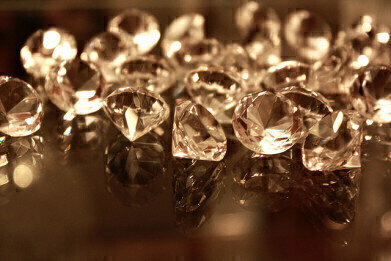News & Views
Does it Rain Diamonds on Saturn?
Nov 24 2015
For decades space scientists have been infatuated with the environmental conditions of other planets. Saturn is a particularly enchanting planet, with NASA researchers recently theorising that due to a myriad of complementary atmospheric conditions, the skies of the Saturn literally rain diamonds. Yes, diamonds!
It’s raining rocks!
Every year, NASA estimates that around 1,000 tons of the coveted rocks rain down on Saturn. While the theory is farfetched and yet to be officially published, scientists at the NASA Jet Propulsion Laboratory have backed their claims with ample evidence.
The latest findings suggest that fellow planets Neptune and Jupiter also experience this atmospheric phenomenon, however Saturn’s conditions are the most hospitable. Thanks to powerful lighting storms of up to 10 strokes per second, atmospheric methane molecules break up which results in carbon atoms freely floating through the dense, multilayered atmosphere. As they fall to the ground they transform into graphite. This is rapidly morphed into miniscule diamond pieces measuring less than a millimetre in diameter. Unfortunately, there’s no potential for harvesting the rocks as they overheat and decompose into liquid form at around 22,000 miles into their journey to the surface.
Bizarre downpours in outer space
Are diamonds a little extravagant for your taste? If so, the conditions on Venus may be more to your liking. With an atmosphere full of sulfuric acid clouds, the skies of Venus spit down white hot sulfuric acid rain. Though the surface itself is never charred as the planet’s scorching 480 degree Celsius temperatures ensure that the rain is transformed into gas at least 25 kilometres before it makes contact.
On Titan (Saturn’s biggest moon) frequent icy methane rainstorms paint the skies in a seasonal cycle. This sees recurring rains fill up the moon’s lakes which eventually evaporate, turn into clouds and kick-start the entire process all over again. Why liquid methane? Given Titan’s surface temperature runs at an icy minus 179 Celsius, methane exists in liquid form.
Thought Saturn, Venus and Titan were extreme? On Mars it rains dry-ice snow, Jupiter is showered with liquid helium rain and the sun is deluged with plasma precipitation. Thankfully here on planet earth, H2O is the harmless downpour of choice.
As well as raining down from the skies of faraway planets, gases are also an integral part of modern science here on Earth. If your lab uses gas in its compressed or liquefied form, ‘Do you use Compressed and Liquefied Gases? What you must know!’ is a must read article.
Image via Flickr Creative Commons. Credits: Kim Alaniz
Digital Edition
Lab Asia 31.2 April 2024
April 2024
In This Edition Chromatography Articles - Approaches to troubleshooting an SPE method for the analysis of oligonucleotides (pt i) - High-precision liquid flow processes demand full fluidic c...
View all digital editions
Events
Apr 24 2024 Jakarta, Indonesia
Apr 25 2024 Istanbul, Turkey
Apr 28 2024 Montreal, Quebec, Canada
May 05 2024 Seville, Spain
InformEx Zone at CPhl North America
May 07 2024 Pennsylvania, PA, USA


















